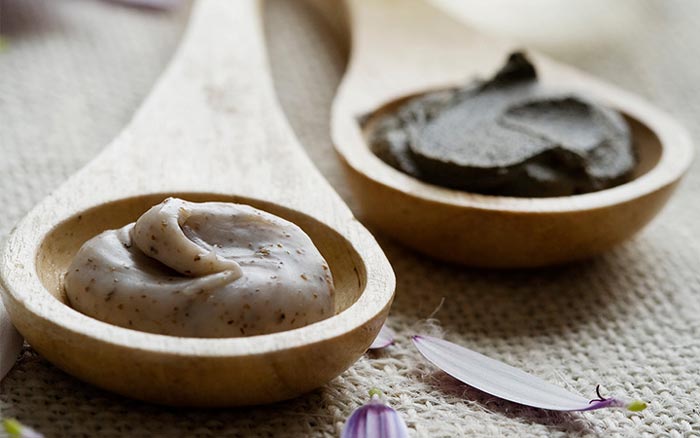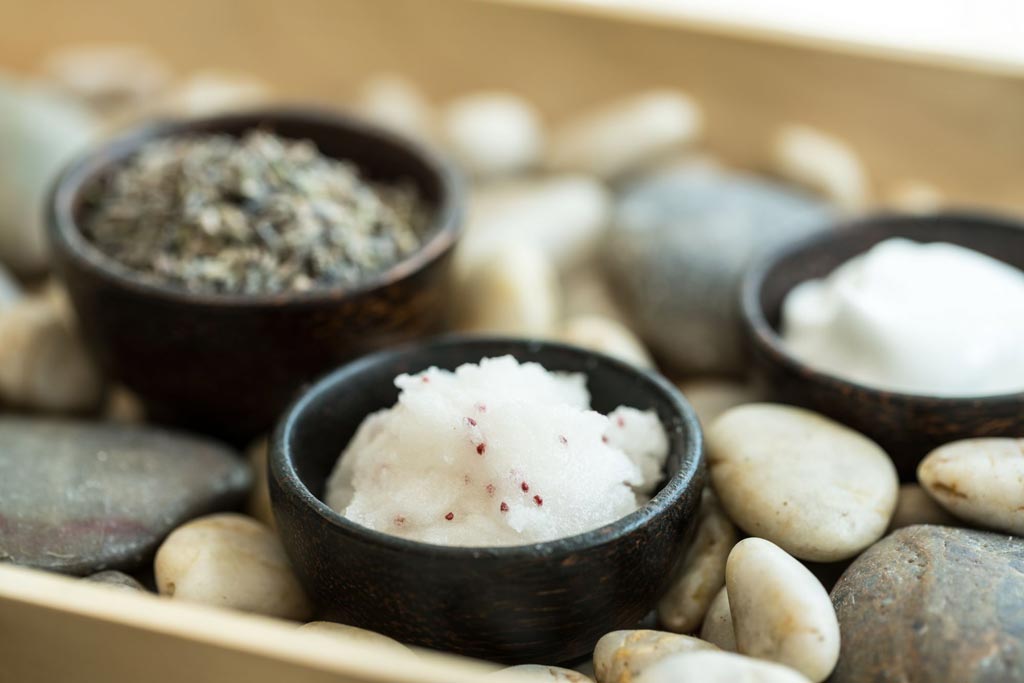Next to massage, getting a facial is one of the most often purchased day-spa experiences, and once you have experienced a professional deep cleanse, polish, and moisturize, it is easy to see why.
However, it is not always possible to find the time or resources required to “outsource” this indulgent a bit of “me-time.” So with that in mind, what options exist around the home?
You may be surprised to hear that the average kitchen contains enough antioxidants, circulation stimulants, skin tonics, antibacterial, and moisturizing agents to keep your skin looking at its very best.
While many brands offer spa-at-home lines, it is often more fun, less costly, and more environmentally friendly to make up something yummy of your own, we call it “face food.”
Starting by Fruit Bowl
 Papaw is an excellent spa-at-home candidate. It is naturally exfoliating and contains a useful enzyme for the face, giving you a fresh and flawless glow.
Papaw is an excellent spa-at-home candidate. It is naturally exfoliating and contains a useful enzyme for the face, giving you a fresh and flawless glow.
Papaw’s main enzyme papain has been extensively studied and has been shown to work by gently breaking down the superficial tissue (such as, the very top layer of the skin).
This natural exfoliation helps to remove dull and darkened pigmentation spots to reveal a softer and more glowing complexion.
Papaw is also an excellent source of vitamin C — a vitamin, which can be hard to keep stable in shop-purchased products as it oxidizes (breaks down), when it comes into contact with air or ultraviolet (UV) light.
Vitamin C is essential for healthy skin growth, and while applying it via a fruit face pack may not get the vitamin deep into the skin cells, it will certainly give the top layers a much needed boost!
Finally, Papaw is a great source of carotene — a chemical, which has been found to boost the skin’s ability to tolerate UV radiation (and we just thought it made it easier to see in the dark) although studies show that it has to be taken orally to impart this effect.
Carotene is also a natural antioxidant and as such can help stave off the skin ageing process.
In order to reap the benefits of this fruit, it needs to be freshly cut and raw. Heating up the fruit will denature (or break down) the papain enzyme.
Take approximately 100 grams of papaw and pulp into a coarse paste in a mortar and pestle. Apply to clean, dry skin, leave it for 10 minutes. Rinse off with warm water and a face cloth. Moisturize as required.
To make this more moisturizing, you can add a teaspoon of coconut oil and mix.
To make this antibacterial, add one teaspoon of pure honey and mix.
To the Pantry
 There is an amazing amount of ingredients in here to play with. The followings are some of my favorites:
There is an amazing amount of ingredients in here to play with. The followings are some of my favorites:
- Coffee Beans.Caffeine is a natural stimulant, which can be ground up and applied to the skin to boost circulation as an indulgent and rather yummy body scrub! Just pop some beans into your grinder then make them into a paste with your favorite base oil: macadamia nut, jojoba, or sweet almond.
A study done by a team led by Paul Nghiem, associate professor in the University of Washington’s School of Medicine and Fred Hutchinson Cancer Research Center, on hairless mice showed a remarkable ability to withstand UV radiation after receiving an application of a caffeine-based skin-cream. Now, hairless mice are nocturnal and so are very sensitive to UV. If caffeine can help them, it may just help us! The research appeared in Cancer Research Journal.
- Honey.Where would we be without honey? This natural wonder food is amazing on so many levels.
Our spa-at-home treatment utilizes the healing and antibacterial powers of honey to relieve us of our spots, boils, and hard-to-cure abrasions. When applied to a wound, honey gently reacts with oxygen in the air to produce a mild peroxide solution. This property helps to restore our skin to a blemish-free state. At night, just dab some honey onto your sore skin areas and cover over to keep it moist and away from bees and your bed sheets! In the morning, some of the redness and swelling should be gone!
- Vegetable Oils.You may not have thought of using your frying oil on your face before, but with some careful selection, it may be what your skin has been crying out for!
Pure vegetable oils come in a variety of different viscosities (thicknesses). Macadamia is well-tolerated and is the closest to sebum (our skin’s own moisturizer.) Jojoba oil is also a close-running contender but is generally more moisturizing due to its waxy consistency. Sweet almond oil is light and cost-effective, great for your home-made massage treatments. Why not make your own massage oil by adding 3–4 drops or your favorite essential oil blend to 30 milliliters of oil?
Some Home Basics
Bicarbonate of soda is great at removing stains off your teeth due to its surfactant and abrasive properties. It does taste a bit soapy, so mix it with some peppermint oil to make it more palatable.
- Salt.Good old table salt can put the smile back into tired feet — best still go for some Himalayan rock salt, which is usually pink in colordue to its high mineral content. Put a cup or two into a bowl of warm water with one or two drops of essential oil for a relaxing foot bath.
Feeling inspired? Well, what are you waiting for? Just shut the door, grab some ingredients, and prepare to be indulged in the comfort of your own home.
This article is from Science’s archive, originally published on an earlier date.
References:
- “I love you honey.” Realize Beauty. Mar. 2009. Accessed Feb. 2010.
- Penland, Jack. “Caffeine and skin.” ScienCentral. Apr. 2008. Accessed Feb. 2010.
- Revista Brasileira de Ciencias Farmaceuticas. “Reference for papaw science.” Vol 44, no 1. Jan/March 2008. Accessed Feb. 2010.
- Wertz, Karin. Seifert, Nicole. Buchwald Hunziker, Petra. Riss, Georges. Wyss, Adrian. Lankin, Christopher. Goralczyk, Regina. “b-carotene inhibits UVA-induced matrix metalloprotease 1 and 10 expression in keratinocytes by a single oxygen-dependent mechanism.” Sciencedirect.com. Sep. 2004. Accessed Feb. 2010.